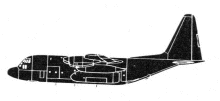Incident Overview

Description
The DC-3 Turbo plane was charted by the U.S. National Science Foundation (NSF) providing support to a group of researchers at a remote location near Mt. Patterson in West Antarctica. The passengers aboard the plane were part of the NSF-funded portion of the international Polar Earth Observatory Network (POLENET) project, which is deploying GPS units and seismic sensors across Antarctica. The captain said that during the takeoff run, as the airplane neared 70 knots, he moved the airplane’s control column aft in an attempt to lower the tail, and attain a flying attitude. Just before the airplane became airborne, the right wing lifted and left wing struck the snow-covered terrain, which pivoted the airplane 90 degrees to the left. Both main landing gear assemblies collapsed and the airplane came to rest on the belly, sustaining substantial damage to the left wing and fuselage. The first officer reported that during the takeoff run, as the airplane neared 60 knots, and as the captain moved the control column aft, she felt the airplane’s tailwheel contact the hard packed snow. The first officer said that other captains that she had flown with usually attain a higher airspeed before becoming airborne. The cockpit voice recorder revealed that the highest airspeed that the first officer called out during the takeoff run was 60 knots, about 3 to 5 seconds prior to the crash. The airplane sustained damage to the underside of the nose, the tail wheel collapsed, both main landing gears separated and both propellers were damaged. PROBABLE CAUSE: “The captain’s decision to lift off before attaining a proper airspeed, resulting in a loss of control during takeoff.”
Primary Cause
The captain?s decision to lift off before attaining a proper airspeed, resulting in a loss of control during takeoff.The captain?s decision to lift off before attaining a proper airspeed, resulting in a loss of control during takeoff.Share on:



